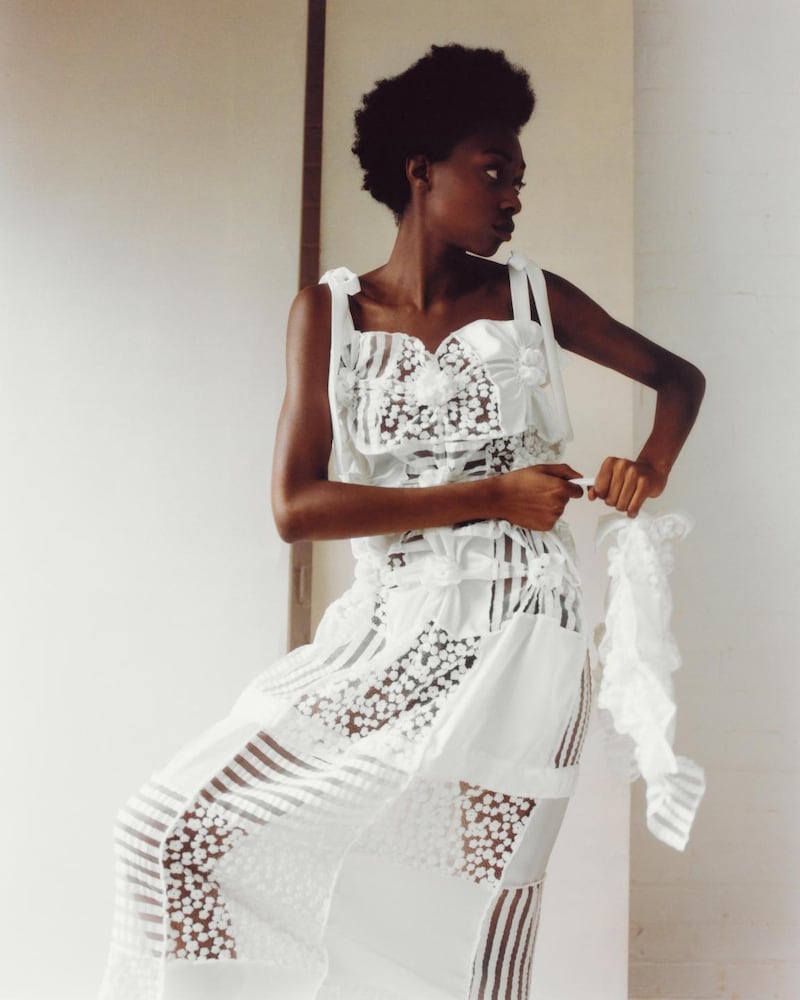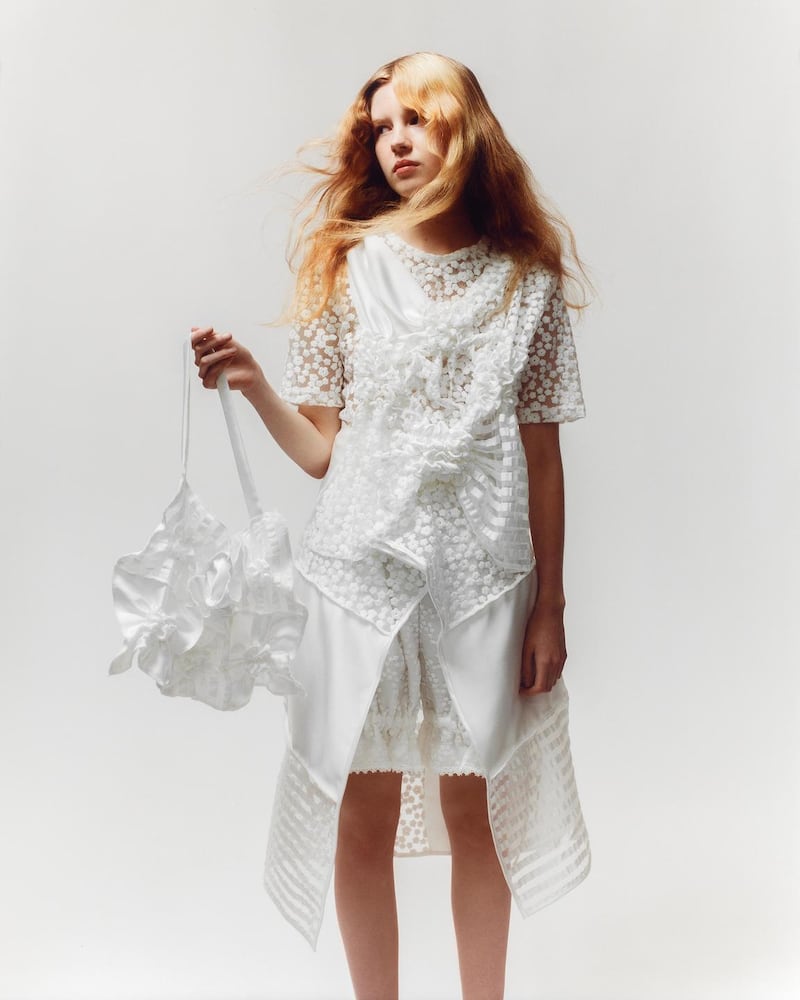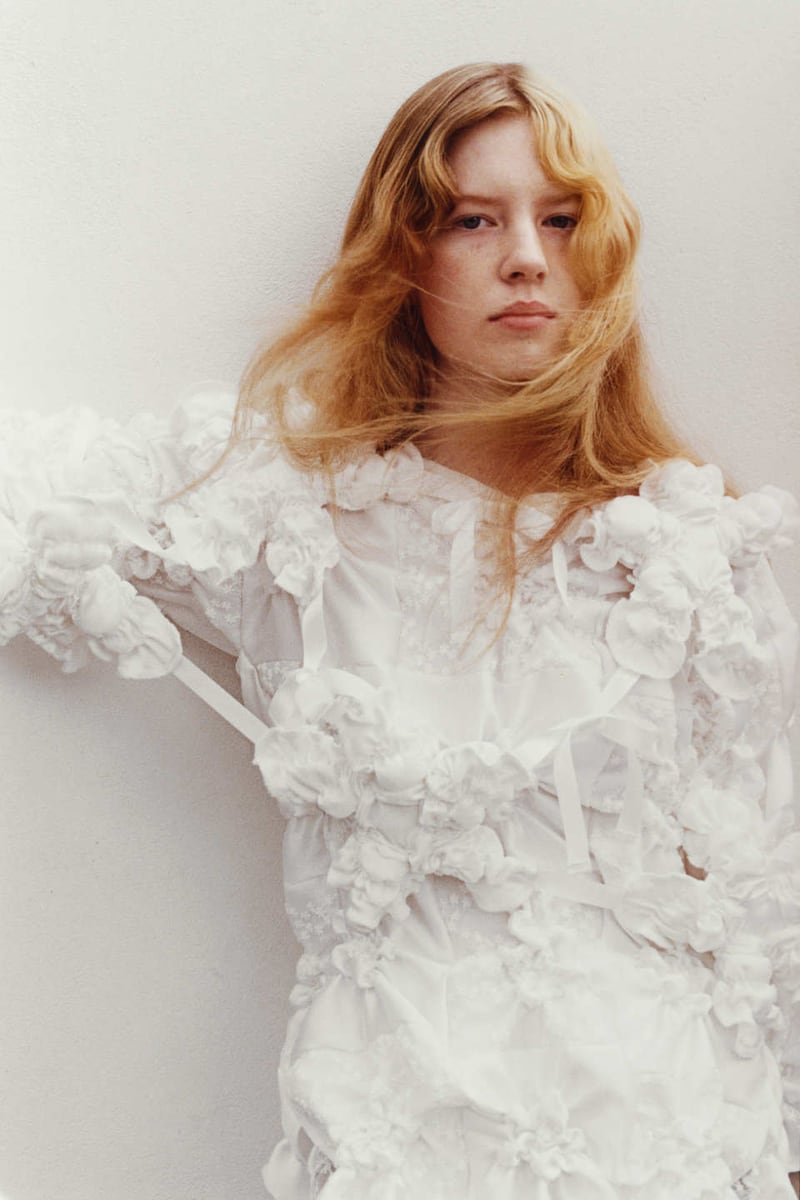When Róisín Pierce, freshly graduated from NCAD in textile design, entered her ornate all-white collection called Mná i Bhláth (Women in Bloom) at the International Fashion and Photographic Festival in Hyeres on the French Riviera in 2019, it created a sensation. Hand smocked and embroidered, its lush, sensuous textures referenced the baptismal, bridal and communion dresses made in the Magdalene laundries, so it was “a visual symbol of a deeper message”, she said. Working in white, traditionally associated with purity and innocence, highlighted the unusual surfaces and silhouettes.
Its extraordinary craftsmanship and ornamentation broke new ground, and apart from having to explain to a bewildered French and international press what Magdalene laundries were, she went on to carry off two awards at the festival – the inaugural Chanel Metiers d’Art accolade and the Prix de Public.

Since then, her status and recognition have grown worldwide. From being one of the five winners of the RDS Craft Award in 2020, her Chanel prize brought her a partnership with renowned Parisian milliner Maison Michel, as well as a further opportunity to collaborate with Maison Paloma, another Chanel specialist known for some of the house’s most intricate fabrications. “The partnership showed the importance of craft and provenance,” she says.
When we meet in Dublin, she bemoans the fact that preserving women’s craft is not taken as seriously as it should be in Ireland, and that there is very little support for Irish fashion designers. As one with a “meaningful and considered” approach to design and to keeping traditional skills alive, she says “people on the business side don’t grasp the potential, which is why Irish designers have to go abroad for support”.
Maison Michel said they had never encountered a designer with so many design ideas. At Paloma, Priscilla Roya at the helm of the storied house understood immediately the direction in which Pierce wanted to go, and made it possible. One of the results was the remarkable Egg dress designed by Pierce, composed on wire with tiny, densely appliqued and scalloped edged handcut flower detailing. The same folding and pleating technique was applied to the matching bolero. This dress and bolero, along with one of the hats made with Maison Michel, are on display in Paris at La Galerie du 19M, a cultural centre in Place Skanderberg in the 19th arrondissement.
Even before the recognition by Chanel, the US luxury department store Nordstrom had spotted her exceptional talent and many of her elaborately handworked pieces – organza bubble skirts, flower dot tees, star point smocks – can now be bought online (nordstrom.com).

One of the 20 international names shortlisted for the 2022 LVMH Prize for Young Fashion Designers, if successful, she will receive a €300,000 endowment and a year-long mentorship with LVMH. More recently she was named as one of the “talented young visionaries” in this year’s Forbes magazine’s annual 30 Under 30 Europe list, as a rising star in the art and culture category.
Back in Dublin, as part of her latest collection she is working on a zero waste piece in satin back crepe worked inside out. Committed to zero waste and working with multiple squares and strips is very much her signature, “and making a pattern with the repetition of pintucking combining with smocking and alternating patterns. It’s like detail on detail on detail. I am a bit of a divil on texture on texture on texture, and the unexpected silhouettes that it creates,” she says, tossing back her long brown hair.
Dressed in black, she is surrounded by bolts of white fabric, finished pieces and others in progress. There are books on embroidery and patchwork on the table, including a rare one on lace called The Irish Flowerers by Elizabeth Boyle which she found, she says with a smile, “in a rare bookshop in the French Alps”. Interested in art from childhood, she always wanted to explore different ways of making clothes, and benefitted from NCAD’s Fine Arts textile training, under tutors Helen McAllister and Nigel Cheney.
Storytelling and craft are in the family DNA. Her grandfather Francis Doyle wrote short stories, and her mother, Angie, an artist and singer, recognised and encouraged her daughter’s creativity growing up as the family moved from Dublin to Galway, then Buckinghamshire and later back to Dublin, the moves dictated by her father’s work.
Angie taught her how to crochet, and remembers her daughter “always very happy being engrossed creating small things on her own, and really concentrating, fascinated by things no one else was”. She particularly remembers an incident when Róisín threw a gold necklace belonging to Angie on the floor and studied the shape it made, then throwing it again and watching intently at the now different shape. “She must have been about four or five at the time,” Angie remembers.
Her latest collection, called Two for Joy after the traditional children’s nursery rhyme, is yet another hand-sewn, hand-embroidered tour de force of spun sugar lightness, smocked, ruched, embellished and manipulated with her own zero waste techniques, which involve working into one piece of material or with many multiples of strips or squares.

“Working in white in an all over tone makes you work harder, because it is challenging. I like each piece to show the thought process, and I am always looking to achieve something I have not seen before. It needs to come from me. Creativity is a muscle and needs to be trained.
“When I create an unexpected piece, if it feels very fresh or very me, very beautiful and new – it’s a piece of joy and I want to share that joy with others.” There is an appealing sweetness to her work, but its soft, intricate construction is both feminine and powerful.
So who are her customers? “I get many requests for wedding dresses,” she replies, rolling her eyes. “But my clothes appeal to people of all ages in the art and design world, who are open to wearing things in a different way, who find me on Instagram for bespoke pieces which are all done inhouse. It’s not just a business, it is part of you.”
Recognition by Forbes is an honour, she says, “it legitimises the business and more doors will open. It has strengthened my brand’s recognition by leaders outside the fashion industry, and carried my design ethos and visual narratives to a global audience.”
Still under wraps is a collaboration she is planning as well as a live presentation of her work, possibly in London or Paris, “as all my collections have been digital launches and it’s never the same with images”.
Keeping traditional artisanal techniques alive and using them in new and creative ways makes her work special. She loves complexity and the layering elements involved in fabric manipulation – showing embroidery against the skin, making it more decorative. Finding the right shade of white is an ongoing conversation with suppliers - samples that come in the evening have to be viewed the next morning in the light, both indoors and outdoors.
“Optic white is almost blue and milk white changes in the sunlight. You never mix both. Optic is easier to colour match,” she explains. “I am tempted by colour but it is not the right time just yet. I think white is beautiful and pristine and shows manipulation more. In a way I see [what I make] as thought structures, organic shapes that are constructed in such a bizarre way that they have their own beauty to them”.












